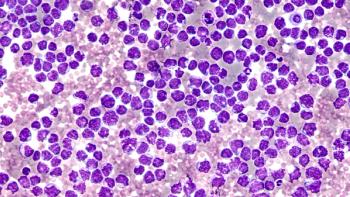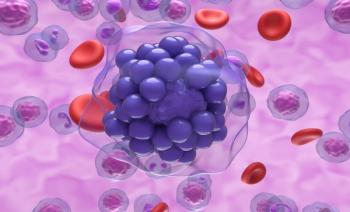
Integrated RA Pathway Improves Outcomes in Real-World Study

Key Takeaways
- The multidisciplinary RA care pathway achieved higher remission rates and faster disease control than usual care, despite more severe baseline conditions.
- The pathway's interdisciplinary model addressed social determinants of health, integrating various specialists to improve patient outcomes.
A multidisciplinary approach that includes addressing social determinants of health reduces time to remission despite higher initial costs.
A new study published in
Researchers compared outcomes among 817 patients enrolled in the care pathway and 3651 patients receiving usual care, drawing on an integrated delivery network linked to Highmark Health insurance claims, enabling both clinical and financial outcome comparisons over 24 months. Baseline characteristics favored the usual-care group: pathway participants had higher baseline CDAI scores (median 9 vs 6; P < .001), greater comorbidity burden, including diabetes (22% vs 14%; P < .001) and depression (33% vs 20%; P < .001), and were more often seropositive (63% vs 51%; P < .001).
The pathway employed an interdisciplinary model that integrated rheumatologists, nurse navigators, pharmacists, behavioral health specialists, dietitians, and social workers. Patients were screened across 15 social risk domains, including depression, food insecurity, financial strain, transportation, and housing instability, with targeted referrals to address identified needs. As the authors noted, “Social determinants of health can affect patient care and outcomes but are not directly addressed by the conventional treat-to-target pharmacologic approach.”
Nurse navigators conducted follow-up calls two weeks after initiation or modification of therapy and at least every three months thereafter. Despite a sicker baseline population, patients in the care pathway achieved markedly better clinical outcomes. At 12 months, 20.8% of pathway participants reached CDAI-defined remission compared with 12.4% under usual care (P = .001). By 24 months, remission rates increased to 33.5% vs 20.3%, respectively (P = .008). Adjusted analyses confirmed a 53% higher likelihood of remission (HR, 1.53; 95% CI, 1.11-2.10) at 2 years. Patients in the pathway reached remission 64 days earlier on average after adjusting for age, sex, race, and baseline disease activity.
When remission and low-disease-activity states were combined, 68.8% of pathway patients achieved target disease control by 24 months vs 16.7% in usual care (P < .001). Among newly diagnosed cases, 45.5% of pathway patients achieved remission within 2 years compared with 40% under usual care, with a nonsignificant trend toward earlier improvement (≈124 days sooner). Newly diagnosed patients in the pathway also demonstrated substantially higher low-disease-activity rates, 67.7% at one year and 86.3% at 2 years, compared with 31.1% and 22.5% in usual care (P < .001).
Cost analyses showed higher expenditures associated with the pathway, with a median RA-related per-member-per-month (PMPM) costs of $48.90 vs $25.70 for usual care (P < .001) in the first year. Among patients prescribed biologic or targeted synthetic DMARDs, median monthly costs were $3,619 vs $2,550 (P = .06) during the first 12 months and $4738 vs $2464 (P = .038) during months 13-24. Investigators attributed these differences to greater baseline disease severity, more frequent biologic use (47% vs 36%; P < .001), and higher switching rates (36% vs 24%; P = .018) among pathway patients. Adherence, measured as the proportion of days covered, was similar between groups (P = .585), though pathway patients maintained therapy longer (median 900 vs 706 days; P < .001).
Emergency department utilization was shown to decrease over time. In the first 12 months, general ED visits were more common among pathway patients (31.7% vs 20.7%; P < .001), but this difference was no longer significant in months 13-24 (28.1% vs 22.8%; P = .117). RA-related and infection-related visits were similar between groups throughout. Patients in remission or low disease activity consistently exhibited fewer ED visits (30% vs 21%; P = .008) and fewer monthly encounters (3.6 vs 3.1; P = .019) than those with active disease.
Although initial costs were higher, the authors noted that improved disease control may yield long-term economic benefits, potentially through reduced hospitalizations and productivity loss. “We plan to use a longer follow-up to investigate if improved clinical outcomes result in reduced direct and indirect costs, to study the impact of individual team-based care interventions, and to validate our findings in other populations,” they wrote.
While previous nurse-led and early arthritis programs have shown benefit,2 the investigators emphasized that “to our knowledge, there is no other study on implementing an RA care pathway with an SDOH-focused, multidisciplinary team alongside guideline-based best practice.”1 They attribute the program’s success to its integration within a fully connected provider-payer ecosystem, enabling coordinated management and continuous data feedback to support treat-to-target goals.
References
1. Sharma T, Barrett TS, Dwyer T, et al. Clinical outcomes of patients within the rheumatoid arthritis care pathway cohort at a tertiary care integrated delivery network: a comparison to usual care. Arthritis Care Res. Published online September 16, 2025. doi:10.1002/acr.25649
2. de Thurah A, Esbensen BA, Roelsgaard IK, Frandsen TF, Primdahl J. Efficacy of embedded nurse-led versus conventional physician-led follow-up in rheumatoid arthritis: a systematic review and meta-analysis. RMD Open. 2017;3(2):e000481. doi:10.1136/rmdopen-2017-00048
Newsletter
Stay ahead of policy, cost, and value—subscribe to AJMC for expert insights at the intersection of clinical care and health economics.













































